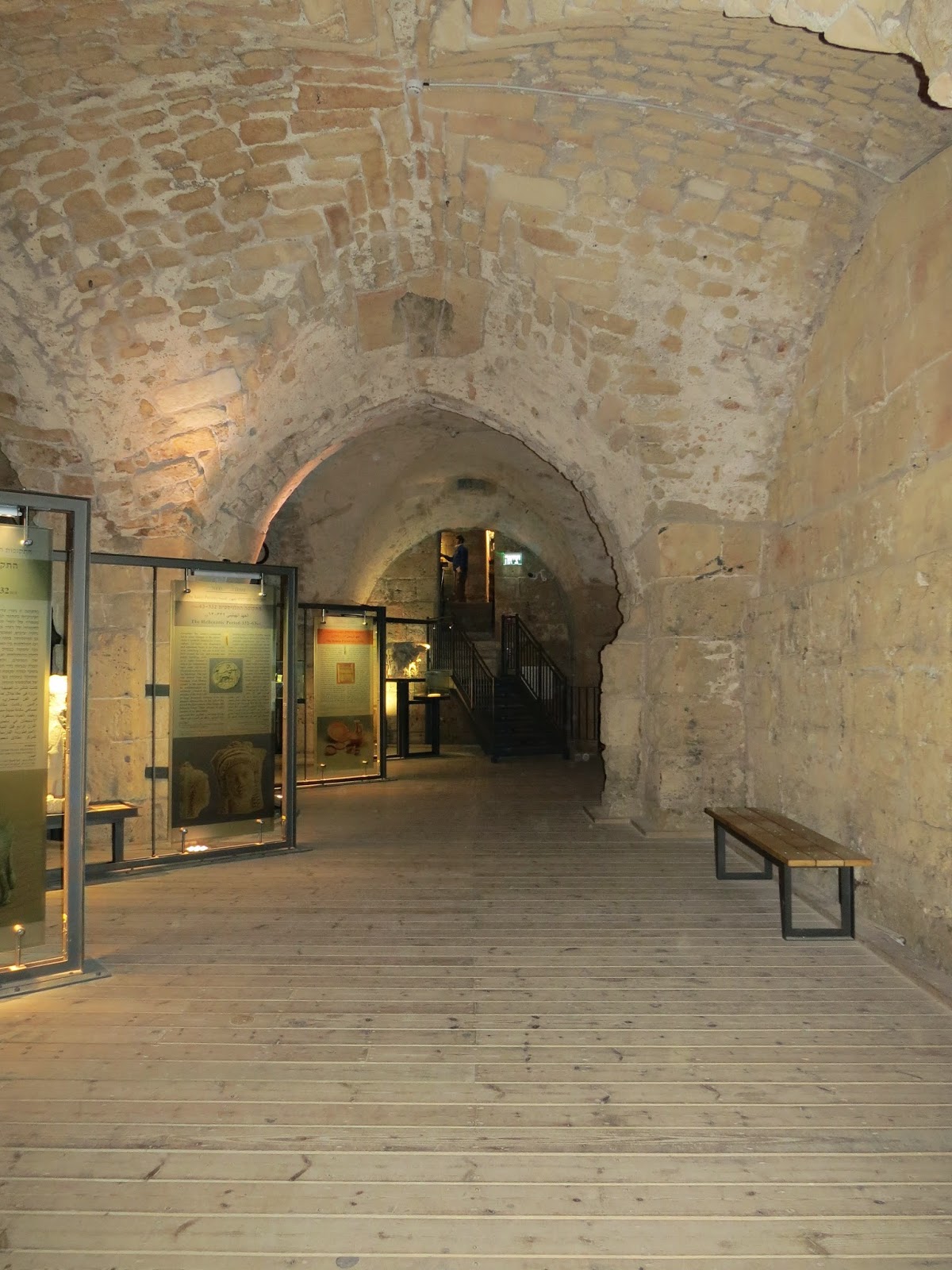From Tel Aviv we drove north along the coast along the Via Maris (by way of the sea) on our journey towards Galilee.
Our first stop was Caesarea, the fortress city built by Herod the Great as the Roman administrative capital. where we disembarked to look at an old Roman aquaduct. These amazing structures were built to bring water to areas where it didn't occur naturally.
Actually, there were two of them, parallel to each other. The first was built by the Romans under Herod the Great, who came to power in 22 BC, and the second one, behind it, by Hadrian, who also built the famous wall in Great Britain.
A large amphitheatre had been unearthed from many layers of sand. We didn't explore it as thoroughly as Terry and I had explored the one in Lyon, France, because it was so cold and windy. Some of the younger people ran up and down the steps.
`
The city of Caesarea was the doorway to the gospel to the gentiles, the non Jews, in New Testament times, when Peter was sent to the house of Cornelius. He was horrified to even enter the house of someone and eat foods that were taboo for Jews, but the Lord spoke to him, telling him it was part of his plan. The apostle Paul was imprisoned here for two years, coming before the Roman emperor as a Roman citizen. A film showed us an artist's impression of the temples and other buildings that used to be here, also the Hippodrome, a vast arena where sports and chariot races took place.
As we rode along, Shmulik would tell us fascinating facts about the vegetation, the terrain, and past history too detailed to keep up with. Random fact: Palm trees were not native to Israel, but 100 saplings were smuggled into the country in 1933 from the Persian Gulf.
Next stop, Mediggo, one of King Solomon's walled fortified cities. A small hill overlooking the fertile Plains of Sharon, was the top layer of a tel, Ahab's Tel. Underneath were 20 layers of civilization! It was awesome to overlook the plain that would be the site of the future Battle of Armageddon. Our first of several "tunnel walks" was through a tunnel built to redirect a spring from the opposite "mountain" range. We couldn't even see to the other side, it was that foggy, although it was a narrow valley.
Then to Mount Carmel, which is actually a ridge of mountains. In Bible times it was the site of Elijah's famous challenge to the prophets of Baal. One true prophet of God against 450 prophets of Baal. God's power triumphed, as the fire of Elijah's sacrifice licked up even the water in the trench surrounding it. Only 535 ft above sea level, it is now the sight of a Carmelite monastery.
 | |
| modern representation of the prophet, Elijah |
In the north the city of Acre was an important fortified port city during the Crusader era, in the early middle ages. We entered the huge reconstructed castle which was similar to many castles in Europe. In the name of Christianity the crusaders travelled to Jerusalem to liberate it from the Turks, but the reality was corruption and bloodshed along the way.
It was raining and I was almost asleep on my feet, so I stopped taking notes for a while.
 |
| reconstructed crusader castle |
The last straw in dampness! A huge, 21 foot ocean wave crashed over the road where we had to walk for a bit, covering us with spray.
My striped sweater, the outer layer out of five layers that day, was decidedly damp.
Our destination that day was Ramot, a resort town in Galilee. Our hotel wasn't actually on the Sea of Galilee, but near it. We could see it the next morning from our window in between rain showers.







No comments:
Post a Comment